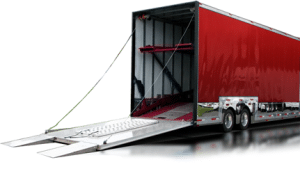Choosing The Right Moving Company
Choosing the right moving company is a pivotal step in ensuring a smooth and hassle-free car relocation. The process begins with thorough research to identify reputable companies with a solid track record. Start by seeking recommendations from friends, family, or online reviews to gather a list of potential candidates. It’s crucial to delve into each company’s history; check their credentials, such as licenses and insurance coverage, which are essential indicators of their legitimacy and reliability.
Once you have shortlisted a few companies, request detailed quotes. A comprehensive quote should include all costs associated with the move—transportation fees, insurance premiums, any additional charges for special services like door-to-door delivery or expedited shipping. Comparing these quotes will give you an understanding of the market rates and help you avoid any hidden fees that might arise later.
Communication is another critical factor to consider when choosing a moving company. Pay attention to how responsive and transparent they are during your interactions. A reliable company will provide clear answers to your questions about the moving process, timelines, and contingency plans for unforeseen events like bad weather or mechanical issues.
Additionally, inquire about the type of equipment and methods they use for transporting vehicles. Ensure they have modern trailers equipped with safety features that prevent damage during transit. For long-distance moves or international relocations, confirm that they have experience handling customs regulations and other logistical challenges.
Trustworthiness cannot be overstated; entrusting your vehicle—often one of your most valuable possessions—to someone else requires confidence in their professionalism and expertise. By taking these factors into account when choosing a moving company, you can ensure that your car arrives at its destination safely and on time.
Scheduling Your Move
Scheduling your car move is a pivotal step in ensuring a smooth and hassle-free relocation. The first thing to consider is timing. Ideally, you want to plan your move well in advance—at least two to three weeks before the actual moving date. This buffer period allows you ample time to research and contact various car shipping companies, compare quotes, and finalize your choice based on reliability, customer feedback, and cost.
When deciding on a date for the move, consider the season. Summer months are typically busier for car transport services due to the high volume of relocations during this period. Consequently, scheduling during these peak times might require more flexibility with dates and could potentially cost more. On the other hand, winter months may present challenges such as inclement weather conditions that could delay transit times.
Once you have a tentative date in mind, it’s crucial to coordinate it with any other moving plans you have. If you’re also relocating your household items or moving long distances yourself, synchronizing these schedules will save you from unnecessary stress and logistical headaches. Communicate clearly with both your auto transport company and any other movers involved about your preferred timelines.
After setting a date with the auto transport service provider, confirm all details in writing. This includes pickup and delivery dates as well as specific locations for both events. Keep an eye out for any special requirements or preparatory steps outlined by the shipping company; these might include cleaning your vehicle or removing personal belongings.
Lastly, maintain open lines of communication with the transport company throughout the process. Check-in periodically leading up to the move date to ensure everything is still on track according to plan. Being proactive in managing these details will contribute significantly toward making your car move seamless and efficient.
Preparing Your Car For Transport
Before entrusting your vehicle to a transport company, it’s crucial to prepare it adequately to ensure a smooth and damage-free move. Begin by thoroughly cleaning both the interior and exterior of your car. This step may seem purely aesthetic, but it serves a practical purpose as well. A clean car allows you to easily identify any existing scratches, dings, or other forms of damage before transport.
Document these with detailed photographs from multiple angles and share them with the transport company for mutual acknowledgment.
Next, remove all personal items from the vehicle. Transport companies typically prohibit personal belongings inside cars during transit due to liability concerns and weight limitations. Items left inside can shift during transit, potentially causing damage or even theft.
Ensure that your car is in good working condition before shipping. Check fluid levels including oil, brake fluid, coolant, and windshield washer fluid; top them off if necessary. Also inspect the battery condition and tire pressure — properly inflated tires can prevent unnecessary strain on the suspension system during loading and unloading.
Deactivate any automatic toll devices or parking passes to avoid incurring charges while in transit. Additionally, disable alarm systems that could accidentally trigger during transportation.
It’s also wise to leave only about a quarter tank of fuel in your car; this reduces weight without compromising the ability to drive upon delivery.
Lastly, secure any loose parts on your vehicle such as antennas or side mirrors by retracting or folding them inwards if possible. If you have custom accessories like spoilers or roof racks that can be removed easily without tools—consider doing so for added security.
By taking these preparatory steps seriously, you’ll set up a solid foundation for a hassle-free transportation experience ensuring peace of mind throughout the process.
Understanding Insurance And Liability
When preparing for a car move, understanding insurance and liability is paramount to ensure that your vehicle is adequately protected during transit. As you embark on this process, it’s crucial to first review your current auto insurance policy. Many standard policies provide limited or no coverage for vehicles in transit, so you may need additional protection.
The next step involves consulting with the auto transport company about their insurance provisions. Reputable transport companies typically offer some level of coverage, but these policies can vary significantly in terms of what they cover and the limits of liability. It’s essential to ask specific questions about the extent of their coverage, including whether it protects against damage caused by weather, accidents, theft, or vandalism.
Additionally, inquire about the deductible amount and any exclusions that may apply. Request a copy of their insurance certificate and verify its validity with the insurer. This will help you understand exactly what is covered and identify any potential gaps in protection.
If the transport company’s insurance seems insufficient or if there are notable exclusions that concern you, consider purchasing supplementary insurance from a third-party provider. This additional layer of security can provide peace of mind knowing your vehicle is comprehensively covered against unforeseen incidents.
Lastly, thoroughly document the condition of your vehicle before it is handed over for transportation. Take detailed photographs from multiple angles and note any existing damage in writing. This documentation will be invaluable if you need to file a claim due to damage incurred during transit.
By carefully understanding and managing both your own insurance policy and that offered by the transport company, you can better safeguard your investment as it moves from one location to another.
Gathering Necessary Documentation
Gathering the necessary documentation is a crucial step when preparing to move your car, whether you’re relocating across the country or just a few towns over. This process ensures that you comply with all legal requirements and can help avoid potential delays or complications during the move.
First, confirm that your vehicle’s registration is current and up-to-date. An expired registration could not only lead to fines but might also cause issues with the moving company or at state borders. If your registration needs renewal, handle this well in advance of your move date.
Next, make sure you have a valid driver’s license. While it may seem obvious, it’s essential that both your license and any other relevant identification documents are not expired. These IDs are often required by moving companies for verification purposes.
Insurance documentation is another critical piece of the puzzle. Contact your insurance provider to obtain an updated proof of insurance card and clarify whether your policy covers vehicle transportation if you’re using a professional service. Some policies may require additional coverage for moves; understanding this beforehand can save you from unexpected costs.
If you’re hiring a car moving service, thoroughly review their contract and terms of service before signing anything. The contract will outline what documentation they require from you—such as ownership proof or consent forms—and can vary between companies.
Finally, keep all these documents organized in a dedicated folder or digital file accessible at all times during the move. Having everything in one place will streamline interactions with authorities and moving personnel alike, ensuring that your car relocation goes as smoothly as possible.
By diligently gathering and organizing these essential documents ahead of time, you’ll be better prepared to navigate any bureaucratic hurdles and ensure a hassle-free transition for your vehicle to its new location.
Securing Personal Belongings In The Car
When preparing for a car move, securing personal belongings within the vehicle is an essential step to ensure both safety and peace of mind. The process begins with a thorough decluttering of your car. Removing unnecessary items not only reduces weight but also minimizes the risk of damage during transit. Items like loose change, pens, and other small objects should be collected and stored in a secure container.
Next, consider the placement of your valuables. It’s advisable to remove high-value items such as electronics, jewelry, and important documents from the car altogether. These should be transported personally to avoid any potential loss or damage. For items that must remain in the vehicle, use glove compartments or center consoles to store them securely out of sight.
Equally important is ensuring that larger personal belongings are properly secured. Use straps or bungee cords to fasten bulky items like strollers or sports equipment so they don’t shift during transport. For fragile items, bubble wrap and blankets can provide extra cushioning against movement.
Attention should also be given to fluid-containing objects such as bottles or containers; make sure they are sealed tightly to prevent leaks that could damage upholstery or electronics. If you’re transporting any perishable goods, reconsider their inclusion as temperature fluctuations during transit may spoil them.
Lastly, take photographs of your car’s interior before the move for documentation purposes. This can help in case there are disputes about pre-existing conditions versus potential damages incurred during transport.
By thoughtfully organizing and securing your personal belongings within the car, you not only safeguard your possessions but also contribute to a smoother moving experience overall.
Inspecting Your Vehicle Before The Move
Before embarking on the process of moving your car to a new location, it’s essential to conduct a thorough inspection of the vehicle. This step ensures that you are aware of its current condition and can address any potential issues before they become problematic during transit. Start by examining the exterior for any existing damage such as scratches, dents, or rust spots.
Document these imperfections with detailed notes and photographs from multiple angles; this will serve as evidence should disputes arise regarding the car’s condition after the move. Next, check the tires for proper inflation and tread wear. Under-inflated or damaged tires can pose safety risks during loading and unloading, while uneven tread wear might indicate alignment issues that should be addressed beforehand.
Additionally, inspect all glass components—windshield, windows, mirrors—for cracks or chips that could worsen during transportation. Transitioning to the interior, ensure all personal belongings are removed from the vehicle as they could shift and cause damage in transit. Examine upholstery for tears or stains and make note of any pre-existing conditions. Verify that all lights—headlights, brake lights, turn signals—and electrical systems such as power windows and locks are functioning correctly.
Under the hood, check fluid levels including oil, coolant, brake fluid, and transmission fluid. Addressing any low levels or leaks is crucial to prevent mechanical issues during transit. Battery terminals should be clean and securely connected; if your battery is older than three years or shows signs of weakness like slow cranking or dimming lights, consider replacing it before the move.
Conducting this meticulous inspection not only provides peace of mind but also equips you with necessary documentation should anything go awry during your vehicle’s relocation journey.
Receiving And Inspecting Your Car At The Destination
Upon arrival at your destination, receiving and inspecting your car is a crucial step to ensure that it has been transported safely and without any damage. The first thing to do is to meet the delivery driver at the agreed-upon location. It’s essential to be punctual, as delays can incur additional fees or complications.
Once you meet the delivery driver, conduct a thorough external inspection of your vehicle before signing any documents. Look for any visible signs of damage such as scratches, dents, or chipped paint that may have occurred during transit. It’s advisable to have a copy of the initial condition report that was prepared before shipping so you can compare it with the current state of your car.
Next, move on to inspecting the interior. Check for cleanliness and ensure that no personal items are missing if you had left anything in the car. Verify that all electronic components like lights, radio, and air conditioning are functioning correctly.
If you notice any discrepancies or damages, document them immediately. Take clear photographs from multiple angles as evidence and annotate them with detailed notes about their nature and location. This documentation will be invaluable should you need to file a claim with either your insurance company or the transport service provider.
After completing your inspection and ensuring everything is in order, sign off on the Bill of Lading (BOL). This document serves as both a receipt of delivery and an acknowledgment of the vehicle’s condition upon arrival.
By taking these careful steps during receiving and inspecting your car at its destination, you can safeguard against potential issues and ensure peace of mind after what is often a stressful process.












